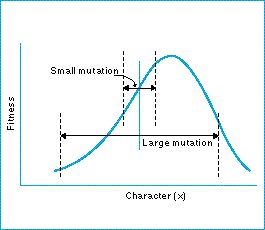Molecular evolution and neutral theory - Why do evolutionary rates differ?

Kimura rejected the selectionist argument as 'completely false'
Kimura argues that it ignores the probability that a mutation, even if it is advantageous, is eventually fixed. The fine-tuning mutants will, Kimura reasons, have lower selective advantage, and the larger proportion of selectively advantageous small mutations will be cancelled by their higher chance of random loss.
However, things are not so clear as Kimura suggests.
His argument works for a unique mutation. But if a favorable mutation occurs recurrently, it will eventually be fixed even if its chance of survival is low each time. Then the recurrent, advantageous mutations in unconstrained regions will eventually be fixed, while the recurrent disruptive changes in active sites will be rejected. The rate of evolution will then be higher in the functionally less constrained parts of molecules, as is observed.
Both theories can therefore explain the well-documented relation between functional constraint and evolutionary rate.
Figure: the selectionist argument uses this general model of adaptation. For some trait (x), the fitness of an individual has an optimum at a certain value of x, and declines away from that point. There is then a "hill" of fitness values. A mutation which changes the value of x also changes its bearer's fitness.
| Next |



